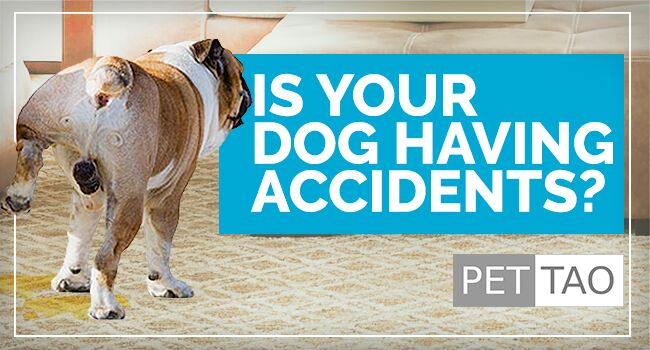It’s tough when your older dog starts losing bladder control.
He’s been your faithful friend for years. But, now he’s having accidents.
You know he’s not doing it on purpose.
But it is still another smelly mess you have to clean up.
However, don’t give up hope yet! We may have a solution for you!
Common Causes of Dog Urinary Incontinence
There are many different causes of incontinence in dogs.
Some common examples are:
- Anatomic disorders
- Certain diseases
- Hormonal imbalance
- Intervertebral disc problems
- Kidney or bladder stones
- Medications
- Old age
- Spinal degeneration
- Spinal injury
- Urinary tract infection
- Weak bladder sphincter
Symptoms of Dog Urinary Incontinence
You’ll most likely notice signs of urinary incontinence right away.
The most common signs of canine urinary incontinence are:
- Dribbling while moving around
- Excessive drinking
- Excessive licking of vulva or penis
- Urine leakage on bedding
- Red skin on vulva or penis
- Urinating large amounts
However, some dogs are more prone to urinary incontinence than others.
For example, canine urinary incontinence is most often seen in:
- Cocker spaniels
- Doberman pinschers
- Middle-aged to older spayed females
- Old English sheepdogs
- Springer spaniels
Western Diagnosis and Treatment for Dog Urinary Incontinence
If your dog suffers from incontinence, you should see your veterinarian.
First, your veterinarian will try to determine the cause of incontinence.
Diagnosing the cause often includes:
- Physical examination
- Urinalysis
- Urine culture
- Bloodwork
- Radiographs
- Ultrasound
However, testing varies depending on what your vet finds during the initial physical exam.
For example, some dogs don’t need radiographs or ultrasounds. Yet, others do.
Sometimes testing shows the cause is a urinary tract infection or a bladder infection.
If your dog suffers either, your veterinarian will recommend antibiotics.
If other problems cause incontinence, most veterinarians recommend hormone therapy or pharmaceuticals.
Eastern Diagnosis and Treatment of Canine Incontinence
TCVM (Traditional Chinese Veterinary Medicine) has a different approach to diagnosing and treating incontinence.
TCVM considers disease a sign of energetic imbalance.
In other words, treatment does not be by addressing the symptoms alone.
The goal is to return the animal’s body to harmony and balance.
TCVM vets often use diet, acupuncture, and herbs to bring pets back into balance.
The TCVM herbal blend Suo Quan Wan often helps dogs suffering from incontinence.
Suo Quan Wan helps dogs suffering the TCVM signs of:
- A deep, weak pulse
- A pale, wet tongue
- Cold or weak back
- Kidney Qi deficiency
- Unfirm Kidney Qi
- Urinary leakage
Suo Quan Wan puts dogs back into energetic balance by:
- Warming Kidney Qi
- Consolidating Kidney Qi
Dr. Hushieng Xie, the founder of the Chi Institute in Reddick, FL, created Suo Quan Wan for veterinary use.
Dr. Xie’s inspiration for Suo Quan Wan was Jiao Zhu Fu Ren Liang Fang (Revised Fine Formulas for Women) by Bi Li-Zhi.








